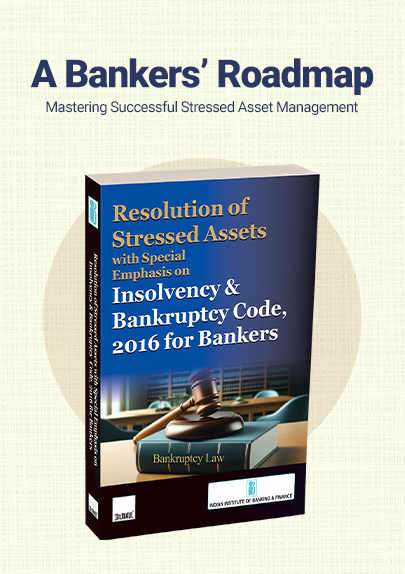GSTR-9 and GSTR-9C Returns – Essential Compliance Guidelines and Submission Deadlines
- Blog|GST & Customs|
- 5 Min Read
- By Taxmann
- |
- Last Updated on 21 October, 2024
GSTR-9 is an annual return filed by all GST-registered taxpayers (excluding specific categories like those under the composition scheme). It consolidates all quarterly returns and includes details on transactions, tax paid, and input tax credit for the financial year. It is mandatory for those with an annual turnover above 2 crore rupees, with a filing deadline of December 31st. GSTR-9C is a reconciliation statement filed by taxpayers whose turnover exceeds 5 crore rupees. It reconciles the data in GSTR-9 with the audited financial statements, ensuring accuracy in reported financials and tax liabilities. This form is prepared by a Chartered Accountant or a Cost Accountant, with the same annual filing deadline of December 31st.
Table of Contents
- Basics of GSTR-9 Return
- Discussion on Various Parts of GSTR-9
- Basics of GSTR-9C Return
- Discussion on Various Parts of GSTR-9C
By CA Sachin Jain – Partner | Jaikumar Jain & Company
1. Basics of GSTR-9 Return
- Mandatory if turnover exceeds 2 crore rupees during the financial year.
- Calculation of turnover will always be based on PAN based.
- Applicable for regular registered person.
- Delay in filing will also impose penalty on the taxpayer.
- Due date to file the return will be 31st of December 2024.
2. Discussion on Various Parts of GSTR-9
PART – 1: Basic Details
In this specific part taxpayer needs to submit the details related to following basic details:
- GSTIN
- Financial Year
- Legal Name
- Trade Name
In this part, maximum details will be auto-populated.

PART – 2: Details Related to Outward Supplies
In this part, the details related to the complete outward supply made during the financial year will be submitted. The list of primary details is as follows:
- Supply Made to Registered and Unregistered Person
- Details Related to Export with Payment of Tax, Supply Made to SEZ with Payment of Tax
- Details Related to Taxes Paid on Account of Advances
- Details Related to Inward Supply Liable to RCM
- Details Related to Credit and Debit Note Including the Details of Amendment
- Details Related to Nil Rated, Non-GST and Exempted Supply
- Details Related to Zero-Rated Supply
- Details Related to Debit and Credit Note on Account of Nil Rated, Exempted and Non-GST Supply.
PART – 3: Details of Input Tax Credit
In this part, the details related to complete Input Tax Credit claimed during the financial year will be submitted. The list of primary details is as follows:
- Details Related to Bifurcation of Input Tax Credit as Input, Input Service and Capital Goods Claimed During the Year.
- Details Related to Bifurcation of Input Tax Credit as Input, Input Service and Capital Goods Claimed During the Year Under Reverse Charge Mechanism from Registered and Unregistered Person.
- Details Related to ITC Claimed for Import of Goods or Services.
- Details Related to Reversal of Input Tax Credit Various Rules.
- Details Related to Reconciliation of Input Tax Credit as per GSTR -3B with GSTR -2B.
PART – 4: Details of Tax Payable
- In this Part, the Details Related to Set Off of Liability with Input Tax Credit will be Shown as per GSTR – 3B.
- In this Part “Tax Payable” Column is Editable (i.e. Taxpayer can Enhance the Liability in
this Column and Pay the Same Through DRC -03)
PART – 5: Details of Adjustments Made During the Subsequent Financial Year
In this Part, the Adjustment Related to Current Financial Year Made During the Subsequent Financial Year Within the Timeline of Section 16(4) Should be Shown. (i.e. Adjustment Related to Input and Output Both)
PART – 6: Details of Refund Claimed and Demand Raised
- This Part is Completely Optional for Financial Year 2023-24.
- In this Part the Details be Provided Related to Refund Claimed During the Financial Year and Demand Raised during the Financial Year.
PART – 7: Details of HSN/SAC Code-wise Summary and Late Fees
- In this Part, the Details Related to HSN and SAC Code wise Summary for Inward and Outward Supply should be Provided.
- The Provided Summary Should be Reconciled with the Outward and Input Supply.
3. Basics of GSTR-9C Return
- Mandatory if turnover 5 crore rupees or more during the financial year.
- Due date to file the return will be 31st of December 2024.
- All the reconciliation should be made through audited financial statements.
- Audited financial statements should be attached with GSTR -9C.
- Bifurcation of turnover based on taxable and non-taxable required.
- In case of multiple GSTN under same PAN – Derived turnover should be mentioned.
4. Discussion on Various Parts of GSTR-9C
4.1 Basic Details
In this specific part, the taxpayer needs to submit the details related to the following basic information.
- GSTIN
- Financial Year
- Legal Name
- Trade Name
- Name of other Act, under which the audit has been done
In this part, maximum details will be auto-populated.
4.2 Turnover Reconciliation from Audited Financial Statement
In this part, the reconciliation should be provided between turnover as per audited financial statement and turnover as per GSTR – 9. The probable reasons for differences are listed below:
- Unbilled Revenue
- Unadjusted Advances
- Deemed Supply
- Trade Discount
- Foreign Exchange Fluctuations
- Valuation Rules
4.3 Reconciliation of Tax Liability with Books of Accounts
- In this Part, The Reconciliation Should Be Provided Between the Tax Liability as per Books of Accounts and the Tax which Has Been Shown Under Tax Payable Column of Form GSTR-9.
- In this Part the Rate wise Outward Liability Should be Shown.
- In this Part the Rate wise Liability on Account of Reverse Charge Mechanism Should be
Shown. - In this Part the Interest Related should be Disclosed Separately.
4.4 Reconciliation of Input Tax Credit with Books of Accounts
In this Part the Reconciliation Should be Provided in Between the Input Tax Credit as per
Books of Accounts and the Input Tax Credit Claimed as per Form GSTR – 9.
4.5 Reconciliation of Head-wise Input Tax Credit
- This Part is Completely Optional for Financial Year 2023-24.
- In this Part the Bifurcation of Input Tax Credit under Various Head Should be Provided and the Same will be Compared through Input Tax Credit Claimed in GSTR -9,
4.6 Declaration of Additional Tax Liability
In this Part, the Liability Declared in GSTR-9C Itself and Paid Through DRC-03 Should Be Shown.
4.7 Various Attachments with Reconciliation Statement
In this Part, the Various Attachment Should be Provided with the GSTR -9C Return
Which is Listed Below:
- Profit and Loss Account
- Balance Sheet
- Form 3CD
- Any Other Required Attachment
Disclaimer: The content/information published on the website is only for general information of the user and shall not be construed as legal advice. While the Taxmann has exercised reasonable efforts to ensure the veracity of information/content published, Taxmann shall be under no liability in any manner whatsoever for incorrect information, if any.

Taxmann Publications has a dedicated in-house Research & Editorial Team. This team consists of a team of Chartered Accountants, Company Secretaries, and Lawyers. This team works under the guidance and supervision of editor-in-chief Mr Rakesh Bhargava.
The Research and Editorial Team is responsible for developing reliable and accurate content for the readers. The team follows the six-sigma approach to achieve the benchmark of zero error in its publications and research platforms. The team ensures that the following publication guidelines are thoroughly followed while developing the content:
- The statutory material is obtained only from the authorized and reliable sources
- All the latest developments in the judicial and legislative fields are covered
- Prepare the analytical write-ups on current, controversial, and important issues to help the readers to understand the concept and its implications
- Every content published by Taxmann is complete, accurate and lucid
- All evidence-based statements are supported with proper reference to Section, Circular No., Notification No. or citations
- The golden rules of grammar, style and consistency are thoroughly followed
- Font and size that’s easy to read and remain consistent across all imprint and digital publications are applied







 CA | CS | CMA
CA | CS | CMA



One thought on “GSTR-9 and GSTR-9C Returns – Essential Compliance Guidelines and Submission Deadlines”